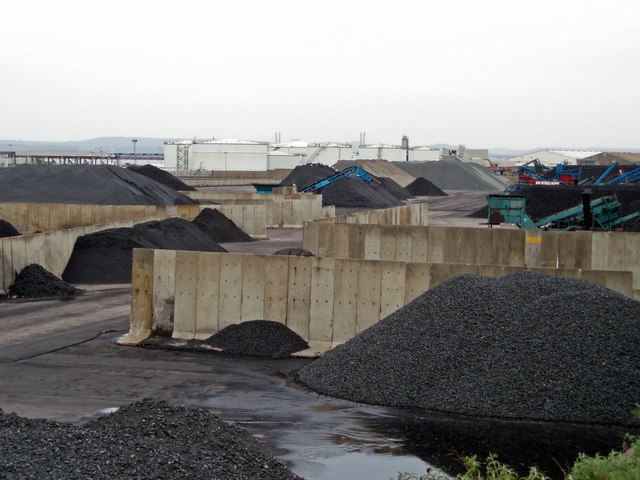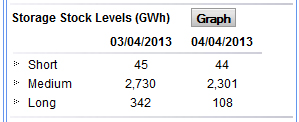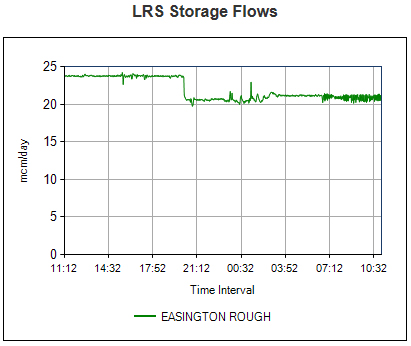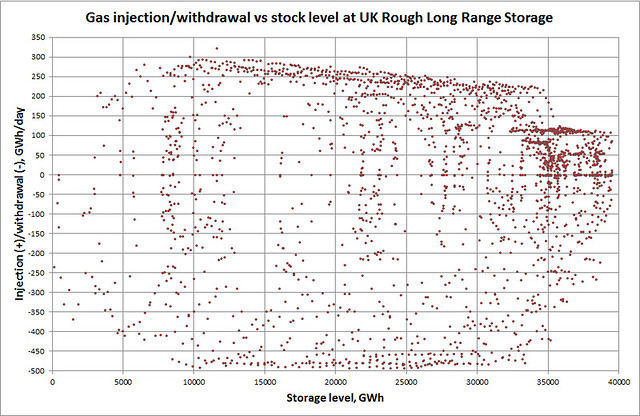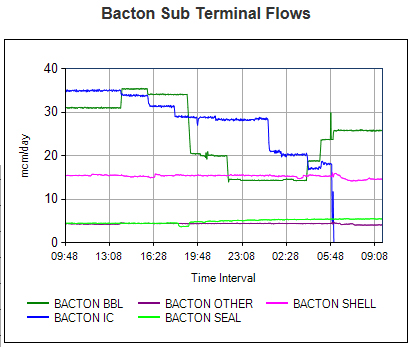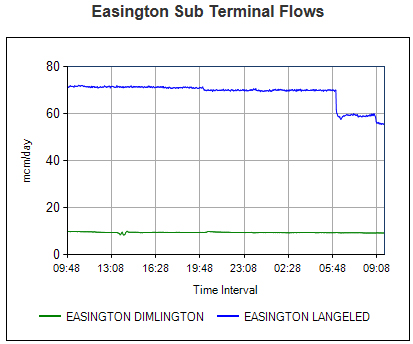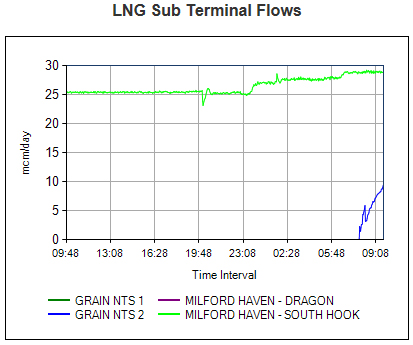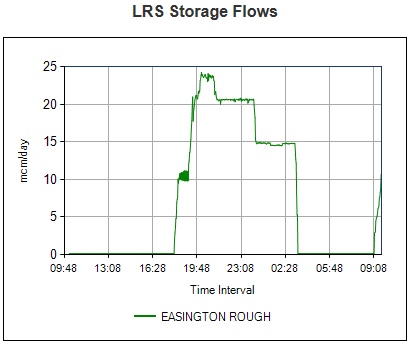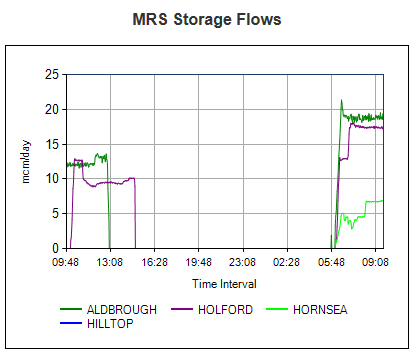Note that I said won't, not can't. We have the technology we need to shift to a renewable-energy powered society, though it would certainly be hard work. And there would also need to be changes in the way we live. But it could be done, if we were willing. However, 'we' includes every individual and organisation, and it's not the hard work that's putting some of them off, it all comes down to money...
This isn't new, but it was on the BBC news today, so I thought it was worth mentioning:
Some 60% to 80% of fossil fuel reserves owned by listed firms could be classed as unburnable if politicians stick to CO2 emission limits, a report warns.
The research by the London School of Economics and NGO Carbon Tracker says firms spend billions of pounds of shareholders' money on exploration.
It says 200 listed firms spent £440bn in 2012 chasing more coal, oil and gas.
It says if this continues for a decade - and if CO2 limits are achieved - they would waste over £4tn.
...
To stick to the current agreed global limit on emissions - which is sure to be breached - the firms would probably be able to emit no more than about 125-275 billion tonnes of CO2 - about a quarter of their assets.
...
The authors say the current fossil fuel business model assumes that there are no emissions limits.
This was written about last year in Rolling Stone:
We have five times as much oil and coal and gas on the books as climate scientists think is safe to burn. We'd have to keep 80 percent of those reserves locked away underground to avoid that fate. Before we knew those numbers, our fate had been likely. Now, barring some massive intervention, it seems certain.So what it comes down to is that it's not just that our electricity supply, transport, food production and manufacturing is tied to fossil fuels, it's that a massive chunk of the world's economies are also inextricably linked to them too. If we ever acknowledge the problem and decide to leave some of these resources in the ground, the value of stock markets, pension funds and much else will plummet, as the amounts to be written off dwarf what happened in the 2007-present financial crisis.
Yes, this coal and gas and oil is still technically in the soil. But it's already economically aboveground – it's figured into share prices, companies are borrowing money against it, nations are basing their budgets on the presumed returns from their patrimony. It explains why the big fossil-fuel companies have fought so hard to prevent the regulation of carbon dioxide – those reserves are their primary asset, the holding that gives their companies their value. It's why they've worked so hard these past years to figure out how to unlock the oil in Canada's tar sands, or how to drill miles beneath the sea, or how to frack the Appalachians.
If you told Exxon or Lukoil that, in order to avoid wrecking the climate, they couldn't pump out their reserves, the value of their companies would plummet. John Fullerton, a former managing director at JP Morgan who now runs the Capital Institute, calculates that at today's market value, those 2,795 gigatons of carbon emissions are worth about $27 trillion. Which is to say, if you paid attention to the scientists and kept 80 percent of it underground, you'd be writing off $20 trillion in assets. The numbers aren't exact, of course, but that carbon bubble makes the housing bubble look small by comparison. It won't necessarily burst – we might well burn all that carbon, in which case investors will do fine. But if we do, the planet will crater. You can have a healthy fossil-fuel balance sheet, or a relatively healthy planet – but now that we know the numbers, it looks like you can't have both.
I can only think of a few ways this pans out, and none of them are pretty. For example:
- We do nothing, climate change accelerates, and by the time we realise we need to change it is too late. Unpredictable weather reduces food supplies and causes localised disasters, eventually impacting the economy sufficiently that fossil fuel extraction slows.
- We have a global economic crash, caused by some other factor, and as a result fossil fuel extraction reduces. But this comes at a heavy price, and if we want to build a renewable energy infrastructure that will support us, we need a working economy while we do it.
- We agree, globally, that fossil fuel extraction is reduced by a few percent a year. Note that I say extraction, not consumption. The only way to make this work is to get less out of the ground, so that prices stay high and encourage reductions in use. We'd probably focus on coal first, as that's where most of the potential lies. Of course, this will not be pain-free, it would change economics completely, would reduce overall economic activity every year, and would make many assets useless, such as recently built coal power stations.
The industrial revolution that kick-started the human impact on the climate was driven by just such a feedback. The steam engine enabled us to drain coal mines, providing access to more coal that could power more steam engines capable of extracting yet more coal. That led to better technologies and materials that eventually helped ramp up production of oil as well. But oil didn't displace coal, it helped us mine it more effectively and stimulated more technologies that raised energy demand overall. So coal use kept rising too – and oil use in turn kept increasing as cleaner gas, nuclear and hydro came on stream, helping power the digital age, which unlocked more advanced technologies capable of opening up harder-to-read fossil-fuel reserves.It does seem that as we add renewables, they are in addition to fossil fuel use, not instead of, and haven't made any real difference to actual CO2 emissions - check out the graph in the Guardian story above.
Seen as a technology-driven feedback loop, it is not surprising that nothing has yet tamed the global emissions curve, because so far nothing has cut off its food supply: fossil fuels. Indeed, though our governments now subsidise clean-power sources and efficient cars and buildings – and encourage us all to use less energy – they are continuing to undermine all that by ripping as much oil, coal and gas out of the ground as possible. And if their own green policies mean there isn't a market for these fuels at home, then no matter: they can just be exported instead.
...
Even the UK, with its world-leading carbon targets, gives tax-breaks to encourage oil and gas recovery and has been growing its total carbon footprint by relying ever more on Chinese factories – and therefore indirectly its reliance on American and Australian coal. And not just that. Although it rarely gets commented on, Britain – along with other supposedly green nations such as Germany – regularly begs Saudi Arabia and the other Opec nations to produce not less oil, but more. As journalist George Monbiot once put it, nations are trying simultaneously to "reduce demand for fossil fuels and increase supply".
I think the only thing we can do is to challenge people in government and industry who support tackling climate change to face up to this issue. Where we go from there is unknown...
Mike Click here to read the rest of this post.
